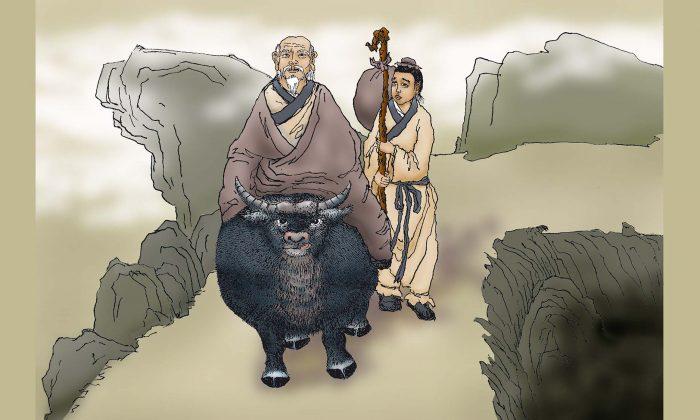The Chinese Communist Party (CCP) has now entered a period of instability.
On Feb. 15, about 20,000 senior citizens gathered outside Zhongshan Park in Wuhan to protest against the CCP’s “health care reform.” This was the second mass gathering of seniors in the city. The first protest occurred on Feb. 8. One elderly man was beaten to the ground when the authorities arrived to block the road. Protesters chanted, “Down with the oppressive government.”
Another large-scale protest against “health care reform” took place in Dalian city, Liaoning Province.
It seems the people now have more courage to stand up to China’s dictatorship. Last year’s “white paper movement” forced CCP leader Xi Jinping to abandon his zero-COVID policy. From New Year’s Day to the Chinese New Year (Jan. 22 to Feb. 1), people all over the country completely ignored the CCP’s ban on fireworks, and the CCP’s police couldn’t do anything about it.
One detail that many people have overlooked is that the Feb. 15 protest was scheduled on Feb. 8 and publicly announced online. The CCP had a full week to prepare and suppress the protest, but the number of protesters was still double that of Feb. 8’s protest.
As early as 1998, former CCP leader Jiang Zemin came up with the policy of “nipping all instabilities in the bud.” This policy has been enforced for more than 20 years. But why did it fail this time?
Let me start with a brief introduction to “health care reform,” and then explain why this puts the CCP in a dilemma.
The protests started when the retirees found that the monthly deposit in their public health care accounts had been cut by about two-thirds. The explanation from Beijing was that the money had been diverted into a pool, meaning that those in need could reimburse a portion of their medical expenses from this pool, which amounts to the government managing the money for them. While this may sound like a good idea, in reality, the Chinese public harbors a deep distrust of the regime.
Thus, China’s medical insurance is not about “robbing the rich to help the poor,” but “robbing the poor to help the rich.” The public believes that once their money enters the pool, it will most likely be misappropriated by the CCP’s top cadres, so it’s better to keep it in their own accounts and available at their own disposal.
Why is the CCP carrying out “health care reform” at this time?

It’s possible that local governments are running out of money. According to a Feb. 15 Reuters report, Chinese provinces spent at least 352 billion yuan (about $51 billion) in 2022 to deal with the recent wave of COVID-19 infections, increasing the pressure on provincial finances amid the economic slowdown.
China’s local finances are now riddled with holes. The zero-COVID policy, including lockdowns, has depleted local government savings. The economic downturn has caused China’s real estate market to wither, and the property sector is the most important source of local revenue. Local debts at all levels have come to 65 trillion yuan (about $9 trillion)—far beyond the ability of local governments to repay.
All these heavy financial pressures have forced local government officials to take pay cuts ranging from 20 percent to 40 percent. At the same time, local governments are required to share about half of the cost of health care coverage with the central government. Therefore, local governments have no choice but to cut health care spending.
It’s surprising that the Feb. 15 protest, announced a week in advance, was not suppressed by local authorities. This is also related to the depletion of local finances. The CCP’s “stability maintenance forces” (police, intelligence, public opinion monitoring, grassroots organizations at all levels, and so on) spend more in a year than the military, and 90 percent of this spending is borne by local coffers. When there is no money in the local treasury, the stability maintenance force is also weakened. Moreover, the parents of these police officers are also the victims of this “health care reform.”
The CCP has been hoping to exchange economic development for popular support. But as the macroeconomic situation deteriorates, the CCP is rapidly losing the support of the people. Protests like the one in Wuhan will become more and more frequent in the future.
The Wuhan protests pose an unprecedented threat to the CCP and put it in a dilemma. The cost of repression is too high, as the “health care reform” affects the lives of 2 million retirees in Wuhan. The policy, which is to be implemented nationwide, will affect hundreds of millions of elderly people. For the CCP, to suppress hundreds of millions of people with 1 million police officers is just implausible.
On the other hand, a compromise by the CCP in Wuhan would also create two serious problems. First, the CCP doesn’t have the money; second, if the CCP compromises, it sends a signal to the people that their protest is effective. Therefore, when the people feel that their other rights are being compromised, they will come out to protest again. If this trend continues, and public opinion always prevails, China will become a democratic society. People will inevitably ask for political freedom, and the CCP’s dictatorship will come to an end.
It is difficult to predict the outcome of the Wuhan protests, but we have to remember that the theme of the protests is not the most important thing. What’s important is the protest itself because it is a process of gradually removing the fear of the CCP from the people’s hearts. And fear is the most important pillar to maintaining the CCP’s rule. When this pillar collapses, the CCP’s regime is in great danger.





